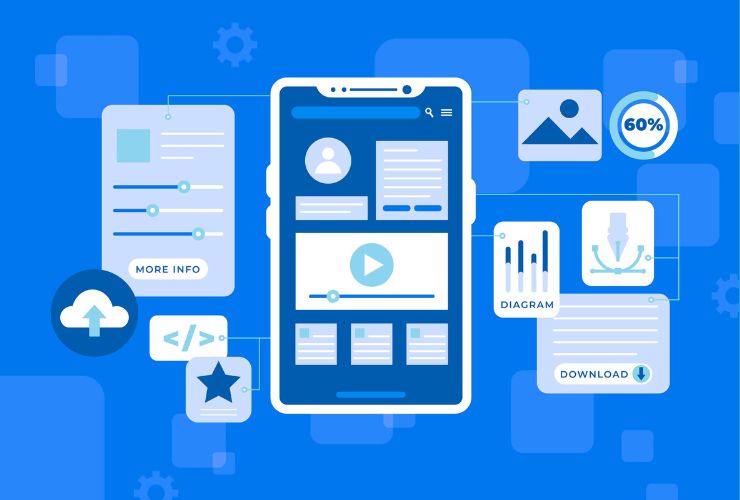The competition of the digital world today has demanded intuitive, engaging, and easy-to-navigate websites and mobile applications. It is where UI and UX design come into play. These two go hand in hand with each other because they play a significant role in determining the success of any digital product by fulfilling the needs and expectations of its users while achieving business goals. Let’s get into why UI/UX design is important for any website or mobile app.
1. First impressions count
The visitor’s eyes always get struck upon a well-crafted UI when a guy opens a website or opens an application. Well-designed layouts and clear fonts and strategic color schemes give the best first impression in case of it. In case the look of the site or application is cluttered or confusing, people tend to leave the site or the application in seconds. Professional UI can attract users at their very first glance and make them curious enough to dive further into it.
2. Increased user-friendliness
It would do a website or an app more good simply to serve its purpose well. A good UX lets visitors look for the needed information or complete the desired actions with minimum effort. It is things such as proper directions of navigation, adequate calls to action, and logical contents well designed that help make a web application friendlier to use while letting users arrive at their goal faster. The bad user experience only frustrates and drives the visitors away.
3. Customer Satisfaction
The ease of use and intuitive nature of a website or application makes the visitor feel comfortable. It makes them feel more in control, thus higher satisfaction levels. This positive experience creates trust and loyalty, causing users to come back, refer the product to others, and even become long-term customers. Satisfied customers are also more likely to interact with your brand and share good word-of-mouth.
4. Increases Conversion Rate
A good UI/UX can directly influence conversion rates. Whether the purpose is to have users sign up for a newsletter, make a purchase, or fill out a contact form, seamless user experiences make it simple for users to complete these tasks. UX design elements like forms that are made simple, a clear description of products, and strategically placed buttons guide users towards conversions, ensuring businesses meet their objectives.
5. Cost Saving in Development
The right good UI/UX design developed scratch saves enormous costs of development. The websites or applications developed at their core to be user-friendly have fewer opportunities for extensive update and modification needs. It also reduces the potential of having redesign because of usability issues that cost a great deal to the organization. This means that good UX design minimizes queries towards the customer support. People do not experience maddening deadlocks that make users confused about their next step within the platform.
6. Accessibility Support
Accessibility is another crucial UX design aspect: your website or app must be accessible to all, including people with disabilities. This involves screen readers, keyboard navigation, and alternative text for images. Any good UX brings everyone access and fun to the platform. Other than being one of the legal requirements, accessibility makes your product available to a much larger audience.
7. Improves SEO and Visibility
Though UI/UX majors mainly care for user satisfaction, it indirectly correlates with your SEO. Websites that have impressive user experience are liked more by the search engines especially Google in ranking on the search results. Other major metrics to rank a site are page loading speeds, mobile-friendliness, and overall navigation. A website having higher dwell time meant better value and importance to a search engine which decreases the bounce rate.
8. A Strong Branding
A consistency-based UI/UX design enhances your brand identity because you can end up with an easily memorable as well as dependable presence through consistently used colors and fonts and even other visuals used for your branding. A web application or web page that shows professionalism and depends on reliability to attract users makes them more liable to trust a brand. Even brand recognition increases in the cases of different types of digital applications.
Conclusion
In today’s digital world, UI/UX design is no longer an option but a definite requirement for any website or mobile app to survive and thrive. Focus on user satisfaction, usability, and smooth functionality can make business platforms engaging and efficient enough to not only fulfill the needs of users but also drive growth and conversions. Whether it’s a new product or a remake of one that already exists, without investment in your UI/UX, you can’t build something that will last and have a positive impact on the user-and ultimately your bottom line.














